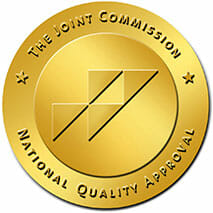
Alcohol Addiction Treatment for Women with Alcohol Use Disorder
For decades, the effects of alcohol use focused on how alcohol affected men in alcohol addiction treatment. Unfortunately, this normative male drinking model underestimated the negative effects of alcohol use disorder on women. Women face a significantly greater risk of suffering alcohol-related harms when compared to men, and more women than ever are being diagnosed with alcohol use disorders.1
If you need help recovering from an alcohol use disorder, Silver Sands Recovery’s alcohol rehab in Prescott, AZ, can help.
Trends in Women’s Drinking
While historically, research has shown that alcohol use disorders are much more common in men than in women, that trend has begun to change. Particularly among young women, recent statistics have shown rates of alcohol use disorder increasing over the years.
In the 2020 National Survey on Drug Use and Health, a nationwide survey showed that:1
- 8% of women over the age of 12 had an alcohol use disorder, compared to 11.7% of men
- 4% of women between the ages of 12 and 17 had an alcohol use disorder, compared to 2.3% of men
- 6% of women between the ages of 18 and 25 had an alcohol use disorder, compared to 14.6% of men
- 3% of women over the age of 26 had an alcohol use disorder, compared to 12.4% of men
So while alcohol use disorder is more prevalent among men than women in general, young women are more likely to have problems with alcohol use than their male counterparts. And since this is a recent phenomenon, we can expect this to continue into adulthood, putting a generation of women at much greater risk.
How Drinking Alcohol Affects Women Differently than Men
Alcohol is an extremely harmful substance to the brain and body. But while anyone who drinks puts themselves at risk, women are in even greater danger of facing severe health consequences than men. There are several reasons why this is the case, including alcohol metabolism, physiological differences, differing drinking motives, and more.
Dose of Alcohol in Women
The first component to consider when assessing the excess harm of alcohol use on women is the dose or how much alcohol is consumed. The National Institute on Alcohol Abuse and Alcoholism has two categories of risky drinking: heavy alcohol use and binge drinking, both of which are associated with an increased risk of alcohol use disorder.
The levels of binge drinking and heavy drinking are different for men and women:2
- For men, drinking four alcoholic drinks on any day or more than 14 drinks in a week is considered heavy drinking
- For women, drinking just three drinks on any day or seven drinks in a week is considered heavy drinking
- Binge drinking is defined as any alcohol consumption that brings blood alcohol concentration above 0.08 percent
The number of drinks that are needed to reach a BAC of 0.08 percent is typically five or more drinks in two hours for men or four or more drinks in two hours for women.
There are several reasons why a woman who drinks less than a man is at increased risk, even if they are the same weight. Physiological differences between men and women mean that women tend to metabolize alcohol differently and can reach greater levels of intoxication faster.
Even when a woman drinks the same amount of alcohol as a man, they tend to have higher blood alcohol concentrations, feel the effect of alcohol faster and have longer-lasting effects. This puts them in increased danger of experiencing alcohol-related harm.3
Motives for Drinking in Women
Another major difference in women’s drinking is the reasoning behind their drinking. Compared to men, women are more likely to drink to cope, one of the most dangerous forms of alcohol consumption.4
Drinking to cope is particularly dangerous because it quickens the development of an alcohol use disorder. When you drink to deal with stress, it can quickly become a negative downward spiral in which:
- You drink to relieve stress
- You experience temporary relief followed by greater stress when the alcohol wears off
- You consume more alcohol to deal with the increased stress
- You become physically dependent on alcohol to the point that you always feel stressed without it
Additionally, drinking to cope with stress can take the place of healthier coping mechanisms, which are vital tools when a person is attempting to get sober. Alcohol addiction treatment, like Silver Sands Recovery’s alcohol rehab in Prescott, AZ, focuses heavily on teaching these healthy coping mechanisms.
Breast Cancer and Alcohol
Alcohol is a known carcinogen.5 Drinking any amount of alcohol raises your risk of developing several types of cancer, including:
- Head and neck cancers
- Liver cancer
- Esophageal cancer
- Colorectal cancer
Women who drink face all these cancer risks but are also at increased risk of breast cancer. Even if you consume a moderate amount of alcohol, your risk for breast cancer can increase.
Research suggests that for every 10 grams of alcohol consumed per day — less than a standard drink, which contains 14 grams of alcohol — the relative risk of breast cancer is increased by 7%.6
Liver Disease
Consuming just a single drink daily can increase the risk of liver cirrhosis for women but not men.7 This is likely due to the higher blood alcohol concentrations women experience when drinking.
Cardiovascular Health
If you’ve ever heard that a glass of red wine is good for your heart health, think again. Alcohol can lead to intense strain on the cardiovascular system, and excessive drinking can cause a condition known as alcoholic cardiomyopathy. This is when your heart changes shape due to alcohol use, which can lead to heart failure.8
Women are at higher risk for developing alcoholic cardiomyopathy when they drink heavily, and they often develop this severe condition much faster than men.
Alcohol Addiction Treatment for Women
Many people who live with alcohol use disorders won’t be able to stop on their own. Fortunately, alcohol addiction treatment at an alcohol rehab in Prescott, AZ, can help.
Alcohol addiction treatment for women focuses on the unique challenges that many women face on their path to recovery. This includes the multitude of health risks and social and psychological problems that are more common in women with alcohol use disorder.
Alcohol Rehab in Prescott, AZ
Our team of trained clinicians and addiction professionals at Silver Sands Recovery’s alcohol rehab in Prescott, AZ, can help women break free from their addictions. We know how difficult it can seem to stop drinking — but it is possible, and there are several evidence-based methods used in alcohol addiction treatment that can help.
Start Alcohol Addiction Treatment Today
When you’re ready to begin alcohol rehab in Prescott, contact our team by calling us or filling out our confidential online form. Our team can help you choose the alcohol addiction treatment options that work best for you and start you on the path to recovery.
Sources:
[1] https://www.samhsa.gov/data/sites/default/files/reports/rpt35323/NSDUHDetailedTabs2020v25/NSDUHDetailedTabs2020v25/NSDUHDetTabsSect5pe2020.htm
[2] https://www.niaaa.nih.gov/alcohol-health/overview-alcohol-consumption/moderate-binge-drinking
[3] https://www.cdc.gov/alcohol/fact-sheets/womens-health.htm
[4] https://www.ncbi.nlm.nih.gov/pmc/articles/PMC6430711/
[5] https://www.cancer.gov/about-cancer/causes-prevention/risk/alcohol/alcohol-fact-sheet
[6] https://www.ncbi.nlm.nih.gov/pmc/articles/PMC3832299/
[7] https://www.ncbi.nlm.nih.gov/pmc/articles/PMC6776700/
[8] https://my.clevelandclinic.org/health/diseases/21994-alcoholic-cardiomyopathy
About the author:

Lisa Waknin is the Founder and Director of Silver Sands Recovery, located in Prescott, Arizona. Lisa started Silver Sands Recovery after immersing herself in the addiction treatment world for several years to figure out what could be done differently to help her daughter and others like her to overcome addiction and stay sober. She believes in a hands-on treatment approach, which includes taking someone out of their environment, providing a 90-day program in a structured environment. During treatment, clients not only recover physically but also learn to live their life again. Lisa is a sought-after expert speaker for recovery support groups, charities, schools, communities, and companies wanting to educate themselves on the explosion of opiate and heroin abuse in our country and the best way to understand, treat, and beat it.




